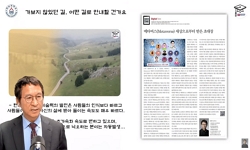This paper is a study that visually structures and examines the relationship between the concepts of metaverse and multimodality, exploring their directions for development. To achieve this, a literature review of the past 20 years was conducted as th...
http://chineseinput.net/에서 pinyin(병음)방식으로 중국어를 변환할 수 있습니다.
변환된 중국어를 복사하여 사용하시면 됩니다.
- 中文 을 입력하시려면 zhongwen을 입력하시고 space를누르시면됩니다.
- 北京 을 입력하시려면 beijing을 입력하시고 space를 누르시면 됩니다.

시각적 모델을 활용한 메타버스의 발전 방향성 분석 및 고찰에 관한 연구 -멀티모달리티의 이해를 중심으로- = A Study on the Analysis and Consideration of the Development Direction of Metaverse Using Visual Models -focused on understanding multimodality-
한글로보기https://www.riss.kr/link?id=A108743350
-
저자
박준홍 (전북대학교 산업디자인학과)

- 발행기관
- 학술지명
- 권호사항
-
발행연도
2023
-
작성언어
Korean
-
주제어
metaverse ; multimodality ; visual model ; Extended reality ; 메타버스 ; 멀티모달리티 ; 시각적 모델 ; 확장현실
-
등재정보
KCI등재
-
자료형태
학술저널
- 발행기관 URL
-
수록면
125-140(16쪽)
- DOI식별코드
- 제공처
-
0
상세조회 -
0
다운로드
부가정보
다국어 초록 (Multilingual Abstract)
And after examining the definitions and properties of key terms, collect, compare, and analyze related concepts and cases that appear in the direction of technology. Afterwards, limitations and improvements are compared and their relationships are analyzed by structuring them into a visual conceptual model. To confirm the structural concept of multimodality, the meaning of the dictionary definition of system and interface is analyzed, and based on this, the inputs and outputs composed of actual interactions are interpreted based on the system. By collecting and analyzing the definition, properties, and direction of the metaverse, it is classified into the real world, agents, and, virtual space. The metaverse is classified into three attributes: foundation, system, and operation, and then all classified information is compared with the four types of metaverse presented by the Acceleration Research Foundation and presented as a conceptual model. The paper also Analyzes the limitations that appear when extended reality technology is applied to the metaverse so that virtual space and physical reality can be naturally connected based on technology. By categorizing them into three categories, we present the limitations of hardware from the developer’s perspective, physical concentration limit from the user’s perspective, and cost and facility limits from the operator’s perspective. Following the analysis of these limitations, the paper discusses the utilization of multimodality technology based on extended reality and Metaverse access devices that can easily check external conditions. In addition, it considers the possibility of creating new opportunities through the sharing of devices and services through cooperation between competing companies.
This paper is a study that visually structures and examines the relationship between the concepts of metaverse and multimodality, exploring their directions for development. To achieve this, a literature review of the past 20 years was conducted as the main source of information.
And after examining the definitions and properties of key terms, collect, compare, and analyze related concepts and cases that appear in the direction of technology. Afterwards, limitations and improvements are compared and their relationships are analyzed by structuring them into a visual conceptual model. To confirm the structural concept of multimodality, the meaning of the dictionary definition of system and interface is analyzed, and based on this, the inputs and outputs composed of actual interactions are interpreted based on the system. By collecting and analyzing the definition, properties, and direction of the metaverse, it is classified into the real world, agents, and, virtual space. The metaverse is classified into three attributes: foundation, system, and operation, and then all classified information is compared with the four types of metaverse presented by the Acceleration Research Foundation and presented as a conceptual model. The paper also Analyzes the limitations that appear when extended reality technology is applied to the metaverse so that virtual space and physical reality can be naturally connected based on technology. By categorizing them into three categories, we present the limitations of hardware from the developer’s perspective, physical concentration limit from the user’s perspective, and cost and facility limits from the operator’s perspective. Following the analysis of these limitations, the paper discusses the utilization of multimodality technology based on extended reality and Metaverse access devices that can easily check external conditions. In addition, it considers the possibility of creating new opportunities through the sharing of devices and services through cooperation between competing companies.
동일학술지(권/호) 다른 논문
-
18-19세기 한국 전통 종교와 옛 한글 문헌의 디자인적 특징 연구(1) - 도교 관련 한글 문헌 글자체의 특징 및 궁체 양식 고찰 -
- 한국기초조형학회
- 유정숙
- 2023
- KCI등재
-
‘늑대인간’과 ‘팜므 파탈’의 만남으로 재화된 『빨간모자』- 안 이클레프와 알랭 고티에의 그림책 『나의 빨간모자』의 시각적 서사를 중심으로 -
- 한국기초조형학회
- 이성엽
- 2023
- KCI등재
-
메타버스 기술을 현장에 적용하는 연구 - 중국 박물관을 중심으로
- 한국기초조형학회
- 리우멍위
- 2023
- KCI등재
-
고객경험을 위한 메타버스 기반 패션 리테일테크에 관한 연구 -제페토 플랫폼을 중심으로-
- 한국기초조형학회
- 이호정
- 2023
- KCI등재




 KCI
KCI






